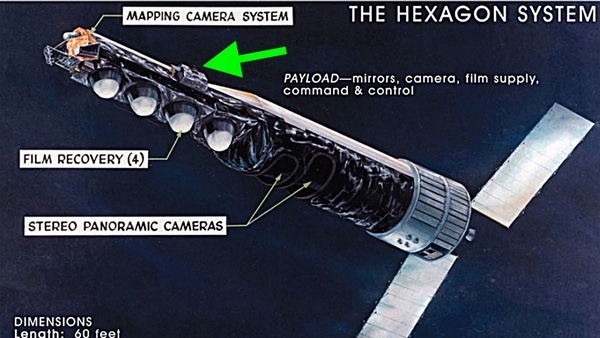Blacker than a very black thing: the HEXAGON reconnaissance satellite signals intelligence payloadsby Dwayne Day Monday, January 10, 2022
 HEXAGON satellites had a large forward section that could carry deployable satellites as well as attached "pallets" used for collecting signals intelligence.
HEXAGON satellites had a large forward section that could carry deployable satellites as well as attached "pallets" used for collecting signals intelligence.On April 18, 1986, a giant Titan 34D rocket roared off its launch pad at California’s Vandenberg Air Force Base and promptly blew itself to smithereens.
The rocket exploded only a few hundred feet above the ground, relatively close to the ocean, and rained pieces of rocket, propellant, and a top secret spy satellite all over the surrounding area. The satellite was a HEXAGON reconnaissance satellite, the last of its type, and its loss was a major blow to the American intelligence community, happening less than a year after another Titan launching from Vandenberg destroyed another reconnaissance satellite called CRYSTAL (originally KENNEN), leaving the United States with very limited reconnaissance capability.
https://www.thespacereview.com/article/4312/1